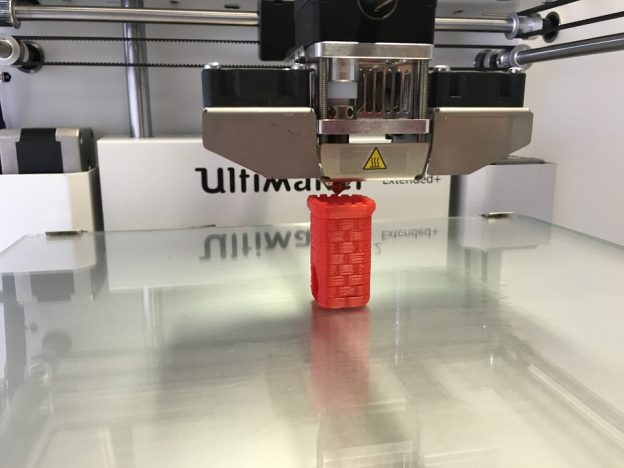Future is Now as 3D Printing Makes Additive Manufacturing a Practical Reality
Naysayers who once scoffed at 3D printing technology for anything more than one-offs or low-volume manufacturing are increasingly being forced to eat their words. New methods of the technology are proving its versatility for everything from athletic shoes to metal parts, with production times, quantity and quality at levels that may well give traditional processes a run for their money.
“The development and uses of this technology are undergoing rapid change, and the return on investment it poses to manufacturers is just the tip of the benefits iceberg,” said Konrad Malik, whose RapidMake 3D Printing caters to larger manufacturers as well users with smaller needs.
“It’s all become pretty exciting stuff,” added Konrad Malik. “It enables faster iterations or modifications to prototypes. It makes customization an affordable path to new revenue streams. But some of the new methods being developed are truly revolutionary.”

3D printer photo/Martin – mebner1
Unlike traditional manufacturing, which forms a part by shaping the raw material (metal or plastic, for example), 3D printing, or additive manufacturing, starts with nothing, but adds minute layers of material according to a computer program’s directions. The program contains a representation of the item being made. The layers are comprised of extruded molten polymer filaments.
The technology has expanded at a rapid pace, attractive not just for small, customized orders, but for high-value products requiring lighter weights or complex shapes. A lot has been invested in 3D printing for just that purpose – General Electric, for one, has spent over $1.5 billion on it for such purposes as jet engine parts.
New techniques, though, are upending conventional thinking about additive manufacturing. One, pioneered by 3D manufacturing startup Carbon, uses a new technology called Digital Light Synthesis to generate high-performance, durable polymeric products.
Its first use is in Adidas athletic shoes, specifically their soles, helping to create “the first performance footwear crafted with light and oxygen.” The process has two critical advantages over standard 3D printing, Carbon founder Joseph DeSimone told The Economist: It’s as much as 100 times faster. And the process does a more effective job of knitting the layers together. The end product is stronger, has a smoother surface and doesn’t require additional processing.
Look out traditional manufacturing. The first 5,000 pairs of Futurecraft 4D shoes will be available this fall, with another 100,000 on the market by the end of 2018. Through two new, highly automated factories in Germany and the U.S., adidas expects annual production to ultimately reach 1 million.
“Carbon and adidas have taken 3D manufacturing a huge step forward,” said Malik. “They have shown an innovative way to achieve 3D manufacturing of real products at scale. Not only does it save on raw material costs, but others utilizing the technique will find it also saves time in the post processing steps 3D manufacturing typically require.”
Another technique that’s changing conventional thinking about 3D manufacturing is called “bound-metal deposition.” Being pioneered by startup Desktop Metal, with a team that includes many 3D printing veterans, the process is unique and creates speed and price benefits.
Its process uses powdered metal to create parts, like all metal printers. But it extrudes metal, similar to the way plastic 3D printing extrudes polymers. The result is the creation of repeatable, high-resolution parts that improve on current printed parts and traditional metal castings. This process is capable of printing metal parts at a rate of 500 cubic inches an hour, versus the 1- to 2-inches an hour production rate of standard laser based metal printers.
Author: Walter Aikens















[* Shield plugin marked this comment as “trash”. Reason: Failed GASP Bot Filter Test (checkbox) *]
[…] it exciting to run a website and only focus on marketing instead of manufacturing products and taking care of sales and promotions on your own? That’s why the drop shipping technique is so […]